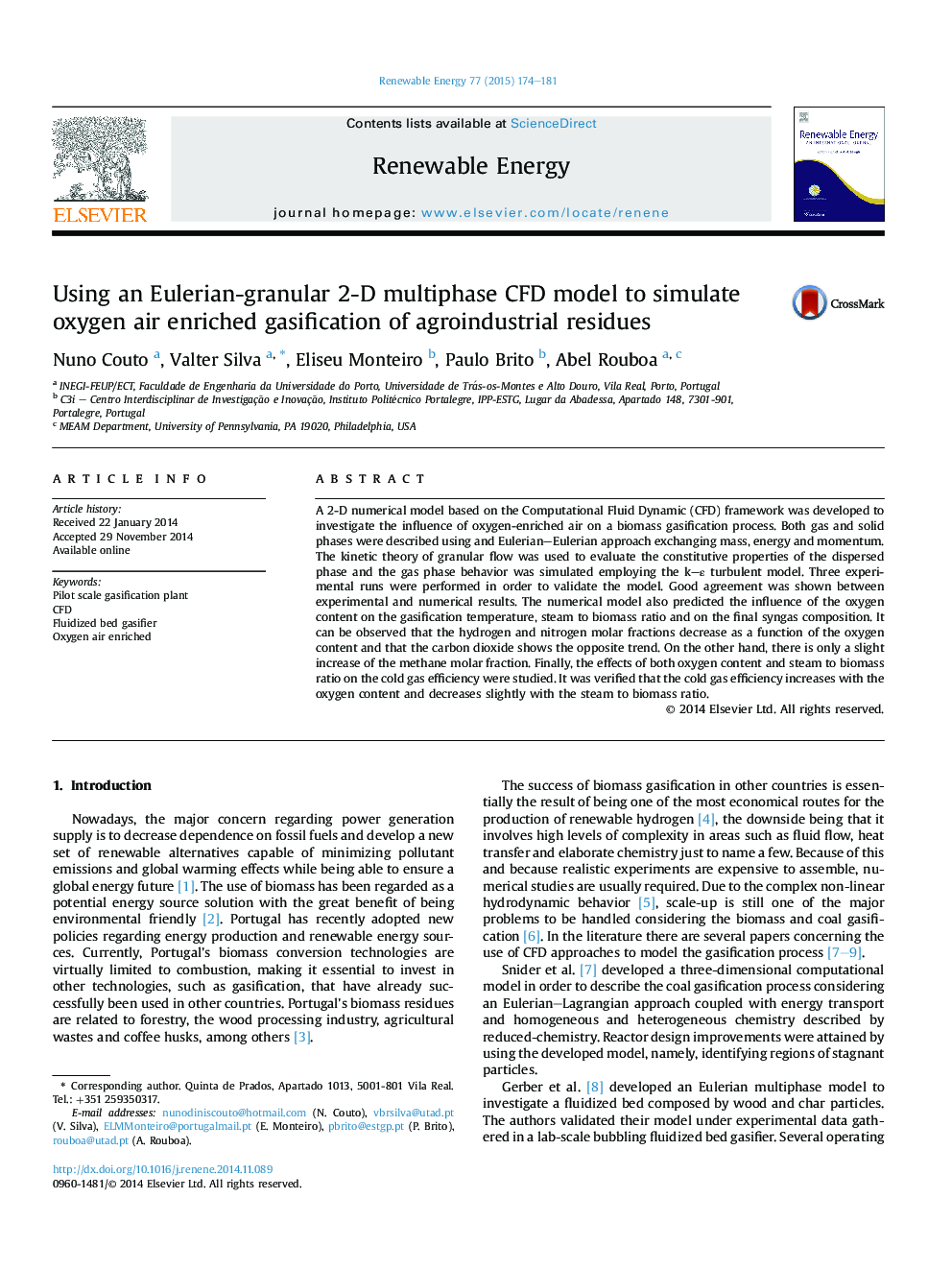| Article ID | Journal | Published Year | Pages | File Type |
|---|---|---|---|---|
| 6767357 | Renewable Energy | 2015 | 8 Pages |
Abstract
A 2-D numerical model based on the Computational Fluid Dynamic (CFD) framework was developed to investigate the influence of oxygen-enriched air on a biomass gasification process. Both gas and solid phases were described using and Eulerian-Eulerian approach exchanging mass, energy and momentum. The kinetic theory of granular flow was used to evaluate the constitutive properties of the dispersed phase and the gas phase behavior was simulated employing the k-ε turbulent model. Three experimental runs were performed in order to validate the model. Good agreement was shown between experimental and numerical results. The numerical model also predicted the influence of the oxygen content on the gasification temperature, steam to biomass ratio and on the final syngas composition. It can be observed that the hydrogen and nitrogen molar fractions decrease as a function of the oxygen content and that the carbon dioxide shows the opposite trend. On the other hand, there is only a slight increase of the methane molar fraction. Finally, the effects of both oxygen content and steam to biomass ratio on the cold gas efficiency were studied. It was verified that the cold gas efficiency increases with the oxygen content and decreases slightly with the steam to biomass ratio.
Keywords
Related Topics
Physical Sciences and Engineering
Energy
Renewable Energy, Sustainability and the Environment
Authors
Nuno Couto, Valter Silva, Eliseu Monteiro, Paulo Brito, Abel Rouboa,
